Contributing Through Casio’s Business to Social Issues Related to Biodiversity
Contributing Through Casio’s Business to Social Issues Related to Biodiversity
Lateco Label Writer Reduces Plastic Waste
The issue of plastic waste in the oceans has become increasingly important as a global environmental problem. Ocean waste includes discarded petroleum-derived fishery materials, as well as waste such as disposable plastic containers and packaging originating on land that flow into the ocean via rivers. It is becoming clear that such waste has an impact on marine ecosystems, and there are concerns about its impact on the marine products used as food. For its new Lateco label writer, Casio redesigned the conventional model to minimize wasteful margins on the edge of the tape, while creating a tape cartridge that can be reused. As a result, the amount of plastic waste generated by using Lateco has been significantly reduced compared to previous Casio models.
This initiative was recognized in 2021 when Lateco tape won Eco Mark Award 2021 Best Product. The product is also registered with the Plastics Smart Campaign of Japan’s Ministry of the Environment.
Lateco product information (in Japanese)
Eco Mark Award 2021 Best Product (in Japanese)
Plastics Smart Campaign at Japan’s Ministry of the Environment
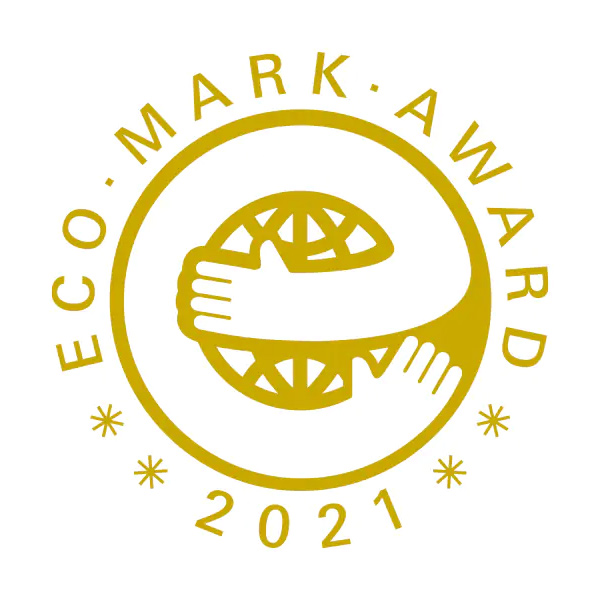

EC-K10
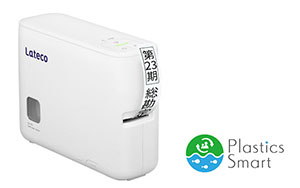
EC-P10

Plastic waste is significantly reduced when changing the tape
Cartridge is reused
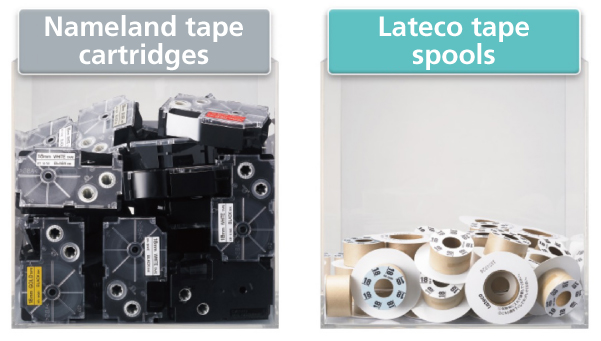
Conventional model waste versus Lateco

Conventional model waste versus Lateco
* Nameland 18-mm tape cartridge waste compared to Lateco 18-mm tape spool waste
As a partner in the Plastics Smart Campaign by Japan’s Ministry of the Environment, in March 2022 Casio also concluded an agreement on collaboration to reduce plastic waste with Higashine City, Yamagata Prefecture. This followed an earlier agreement we concluded with the town of Hayama in Miura District, Kanagawa Prefecture in March 2021. Hayama is implementing an environmentally mindful initiative called the Hayama Clean Program. This initiative has much in common with Casio’s recognition of the issue of plastic waste and the initiatives it is taking to reduce it. By concluding this agreement, Casio will work on mutual cooperation and further promotion. Yamagata Casio, a Casio group company, is also taking part in the agreement with Higashine City and has plans to participate in a variety of activities in Higashine City in the future.
Komagane City in Nagano Prefecture, ktk INC., and Casio aim to bring about a resource-recycling society by collaborating to reduce plastic waste.
Agreement on Collaboration to Reduce Plastic Waste concluded with Hayama (in Japanese)
Three-Party Agreement with Komagane City in Nagano Prefecture and ktk INC. (in Japanese)
Employee Volunteers Participate in Litter Cleanup Event
The problem of plastic pollution in the oceans is an important issue with respect to biodiversity because of the various adverse effects it has on marine organisms. It is also a social issue that jeopardizes the sustainable use of marine resources as food for humanity. The amount of land-generated waste flowing into the ocean through rivers is so high that, to address this problem, the world must first reduce the use of single-use plastics.
For four consecutive years since 2019, employee volunteers primarily from Lateco-related departments participated in the Furusato Cleanup in Arakawa. They even sought to foster greater understanding of these social issues through hands-on activity.
This event usually draws several hundred participants, but the organizing office has held a smaller event for the past three years as a measure to control the spread of COVID-19. Under these circumstances, the energetic collection of waste that had drifted ashore or been illegally dumped in Arakawa in cooperation with many other people while taking infection control measures earned a certain degree of recognition.
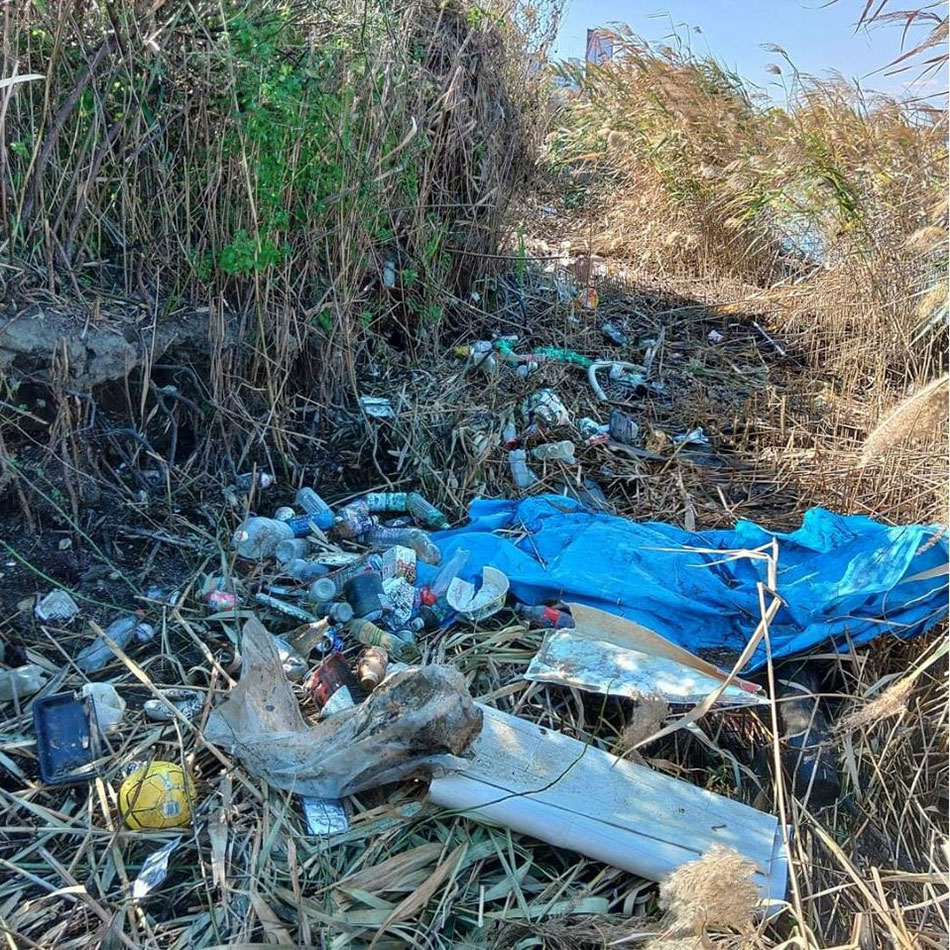
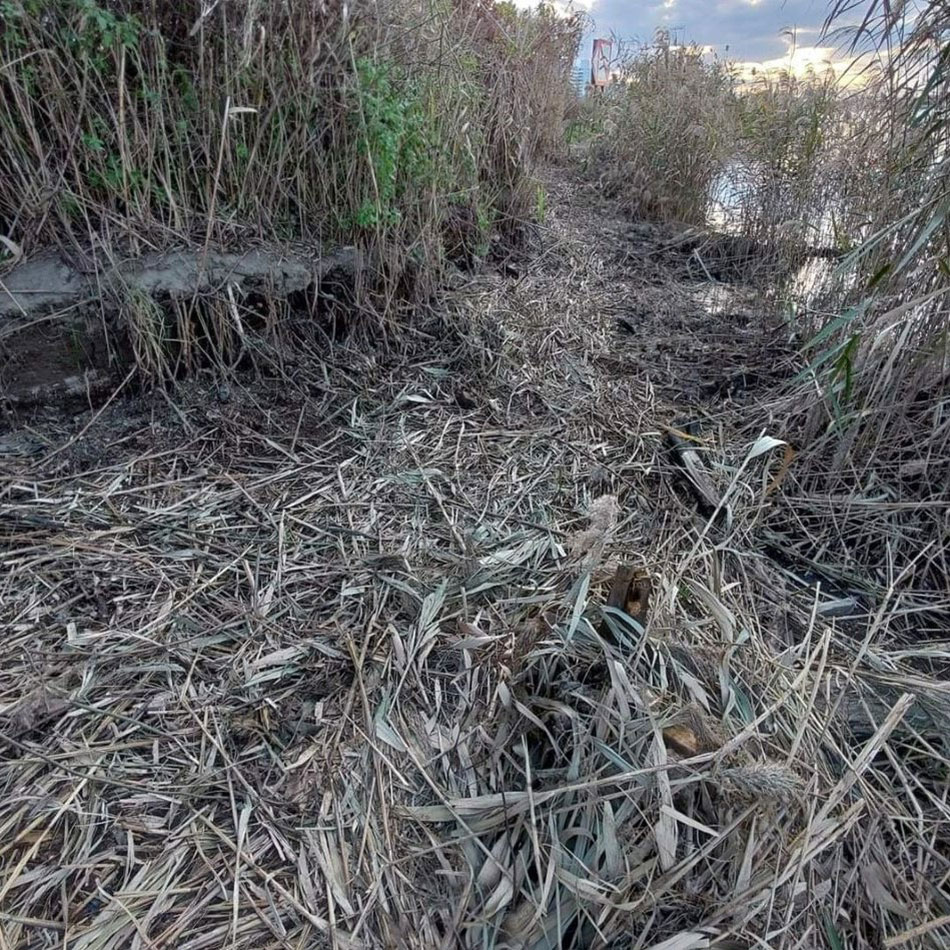
Before and After the clean-up event
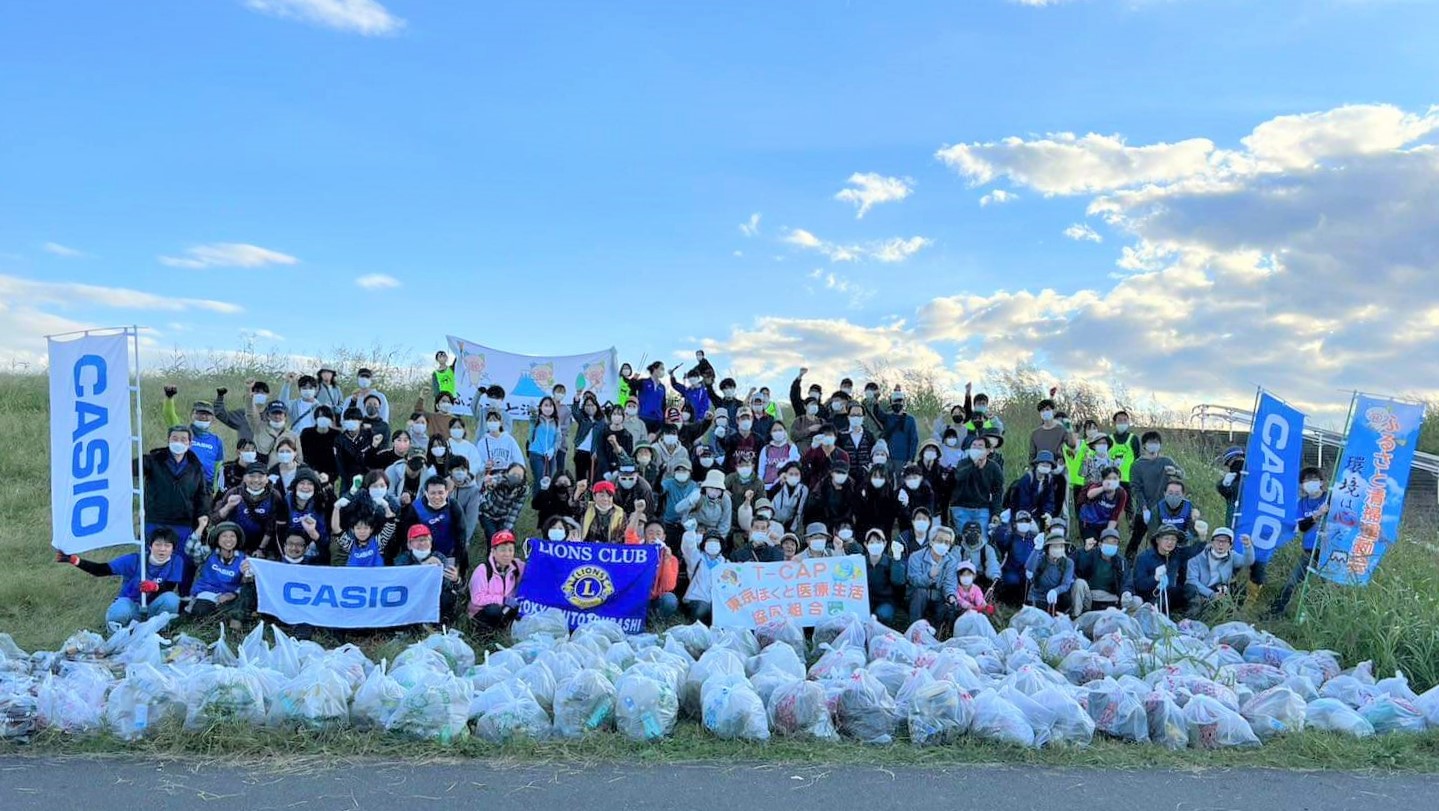
All participants including CASIO volunteer staff
The site where waste was collected in November 2021 had more waste drifted ashore than ever before, and we were given responsibility for the difficult sections in recognition of our good efforts on the two previous occasions. Despite the cold wind, the employee volunteers worked without flinching alongside participants from other citizen groups to collect as much waste as time allowed. This year, too, quite a lot of waste was collected, and everyone was able to share a sense of accomplishment particularly because it was a group effort. In addition, they were able to reaffirm the meaning of continuing these kinds of onsite activities and the importance of reducing plastic waste through business activities by redesigning Casio products like Lateco.
Preserving Biodiversity through Collaboration with Environmental Protection Groups
Casio has developed many brands of watch products such as G-SHOCK, BABY-G, and PROTREK.
These Casio brands deliver functions, performance, and designs suited to the many diverse activities and situations in which people use their watches. Many of those envisioned situations are beautiful and sometimes harsh natural landscapes, including a wide range of land and ocean environments. As the manufacturer of these brands, Casio believes in its responsibility to protect natural environments. Casio leverages its main business activities to achieve this and has been developing collaboration watch models with a number of environmental protection groups each year. The name recognition and product appeal of the Casio brand helps energize each collaborating group’s environmental protection activities and public awareness of them.
G-SHOCK and BABY-G Collaboration Models for the “Love the Sea and the Earth” Project
Based on a theme of “Love the Sea and the Earth,” Casio has developed G-SHOCK and BABY-G brand products with environmental protection groups such as the International Cetacean Education Research Centre (ICERC Japan), Aqua Planet, and Earthwatch Japan, and Casio also supports these groups by providing these products and sharing information.
Casio’s support of ICERC Japan, through the ongoing creation of dolphin and whale watch models that began in 1994, reached its 29th year in 2023.
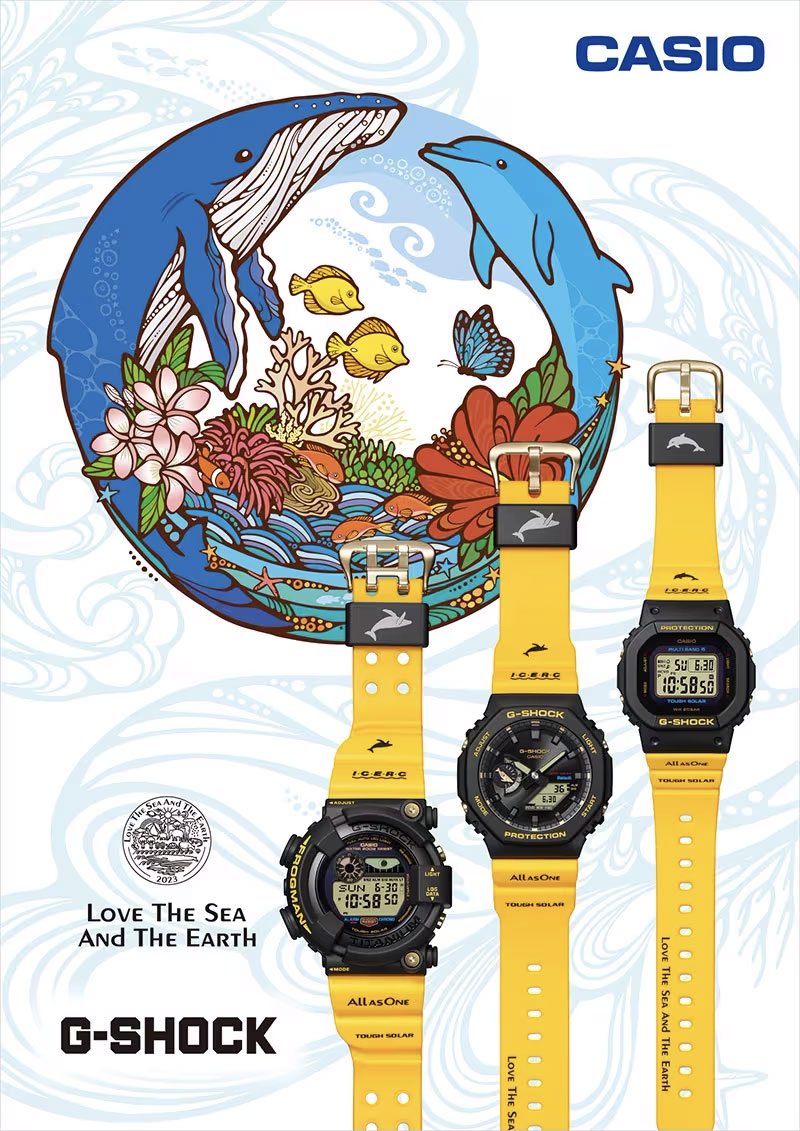
ICERC
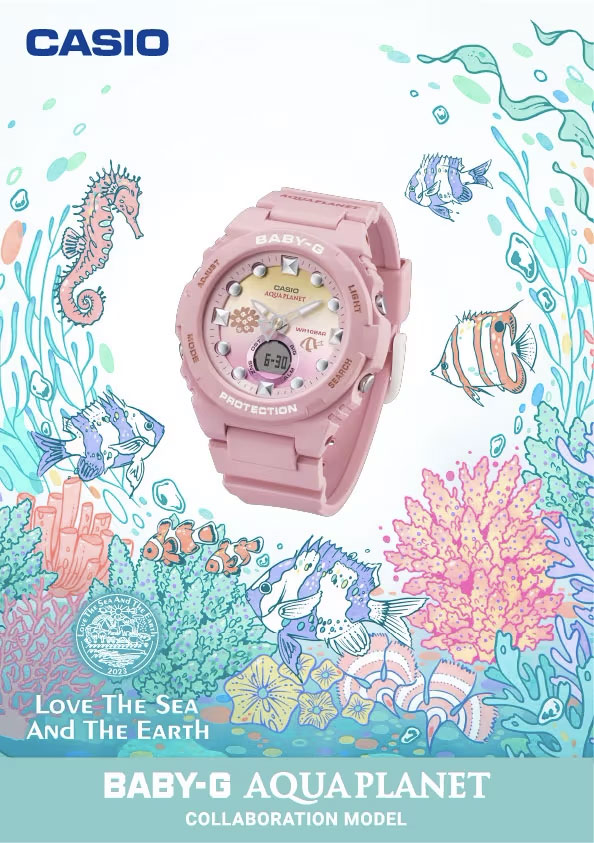
Aqua Planet
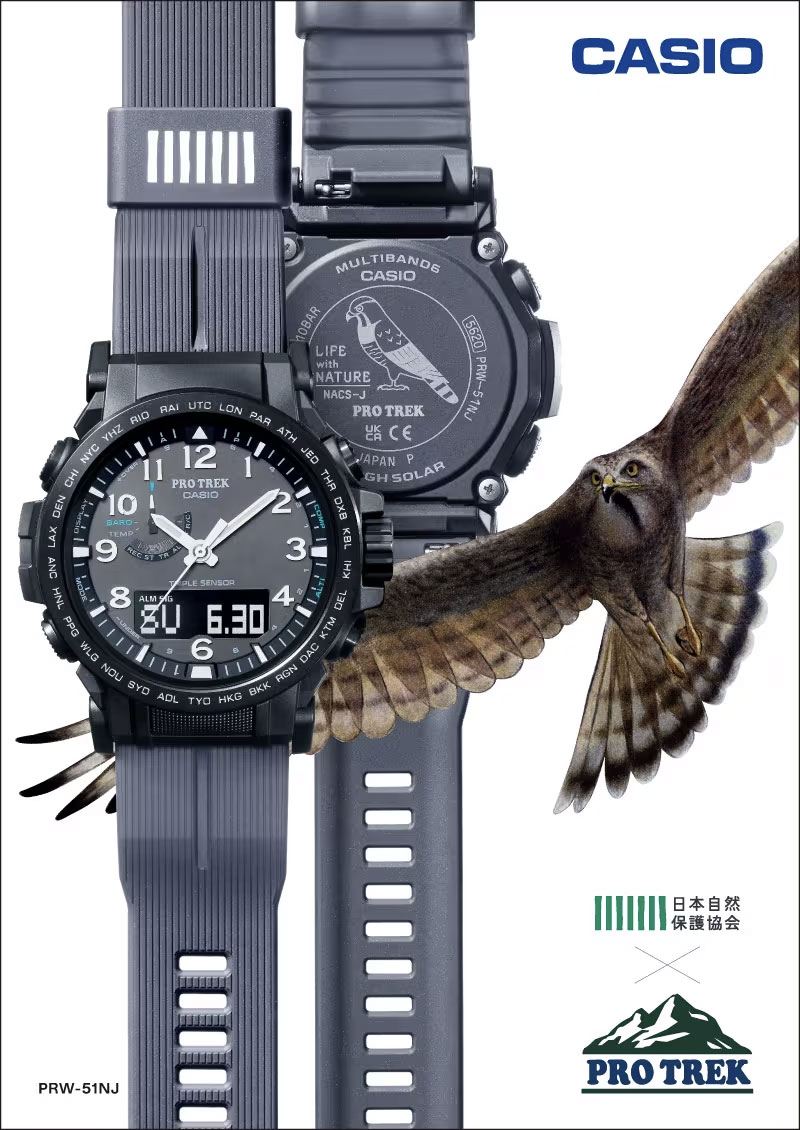
Nature Conservation Society of Japan
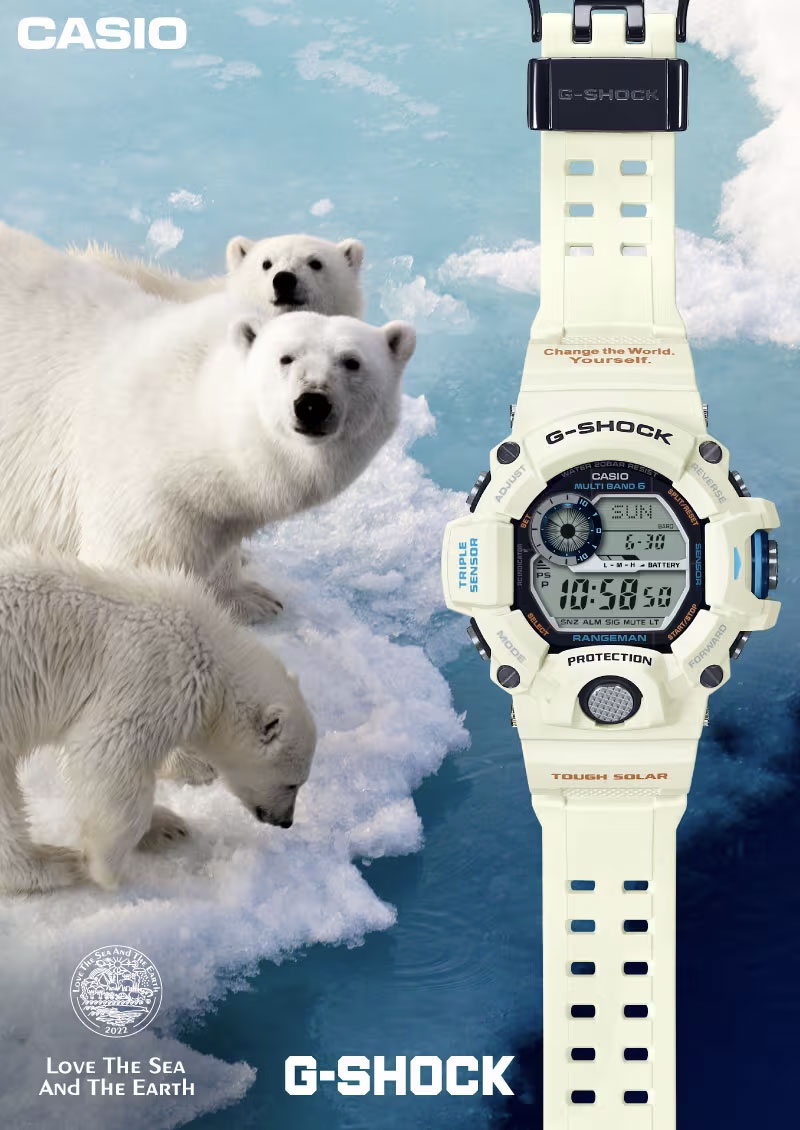
Earthwatch Japan
Casio Coral Field
In 2018, Casio began providing support for Aqua Planet, an NPO that preserves and restores coral, which is chaired by actress Ritsuko Tanaka. In January 2018, the Casio coral field was established in the seas of Ishigaki, Okinawa Prefecture, and 200 coral “seedlings” were planted with the objective for them to reproduce in three years’ time.
The Casio coral field lies to the south of Ishigakijima island, Okinawa Prefecture in shallow seas about 4 meters deep at high tide. The coral coexists with a phytoplankton called zooxanthella, and coral seedlings from more than seven resilient varieties, including Acropora Copiosa Nemenzo in the genus Acropora of the family Acroporidae, were planted.
These coral seedlings were ones that had been newly collected with permission and divided seedlings cultivated in other coral fields. More than three years after planting, the mature coral is now home to small fish.
Contributing to Coral Reef Conservation Activities with Logosease
The Kikaijima Reef Check was held on October 18, 2020 to ascertain the health of the coral reef on the island of Kikaijima in Kagoshima Prefecture. Yamagata Casio assisted by providing Logosease diver communication devices.

Underwater transceiver, Logosease

Reef Check is a coral reef monitoring program conducted on a volunteer basis using an internationally uniform technique to investigate the soundness of coral reefs worldwide. The purpose is to reduce the human impact on coral reefs by recording the condition of fish and other creatures living on coral reefs as well as the condition of the seafloor to assess the health of coral reefs and raise awareness about their protection.
Since the recruiting of volunteer divers from outside the island was curbed because of COVID-19, the Reef Check was conducted only by divers from WWF JAPAN, the KIKAI Institute for Coral Reef Sciences, Amami Marine Life Research Association, Yonemori Diving Service, and divers from the island.
The Reef Check was conducted in good weather with visibility around 40m. The health of the coral reef, which was everyone’s concern, was found to be unchanged from 2019. It was still in good condition with little bleaching.
Yonemori Diving Service provided photos of the Reef Check. It commented that, “Logosease underwater transceivers are essential to communication underwater, and they were extremely valuable during the Reef Check. Basically, the Reef Check is conducted in pairs or groups of three, so we appreciate being able to precisely communicate by voice when confirming, collaborating, and giving signals.”
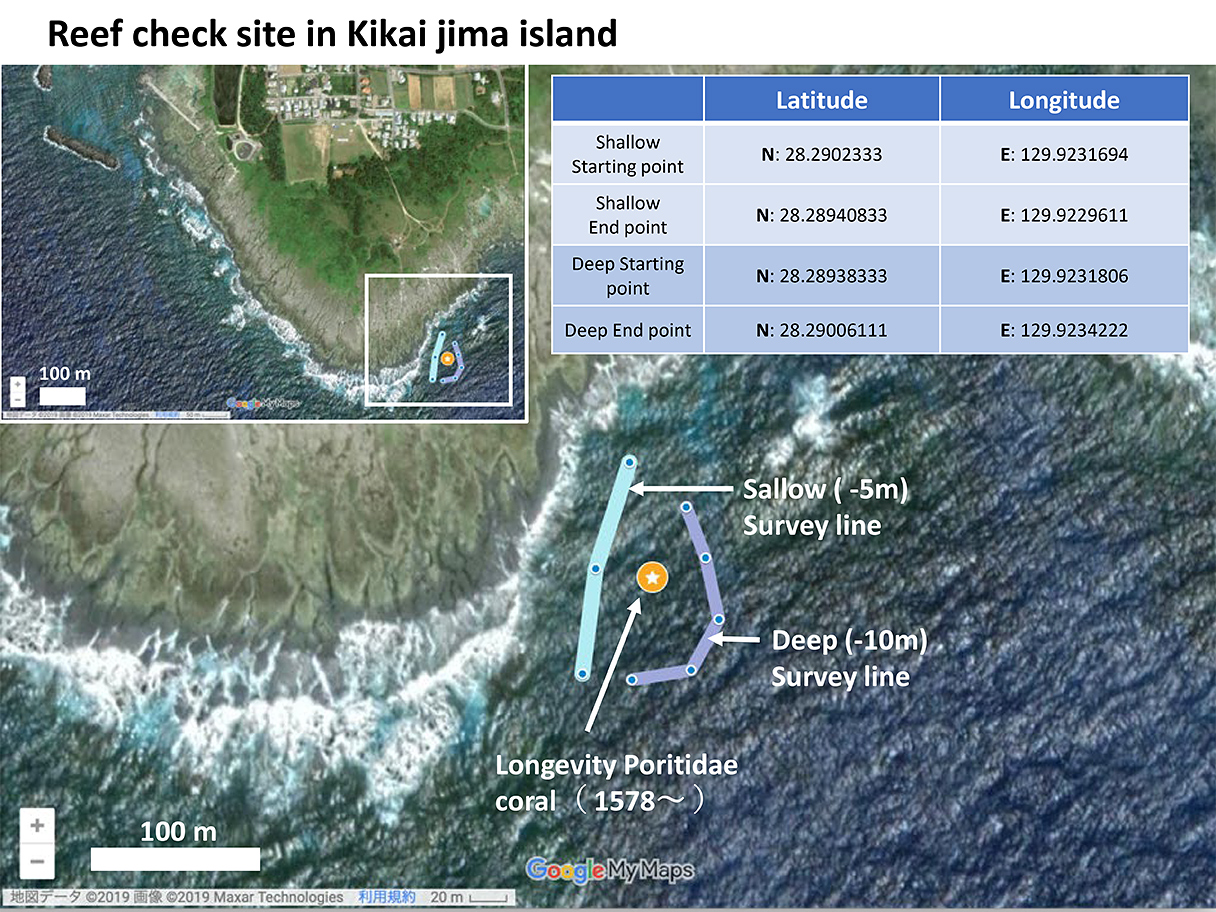
Source: KIKAI Institute for Coral Reef Sciences


